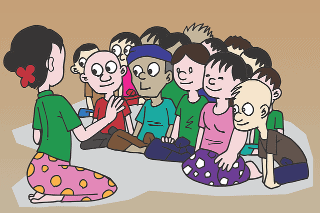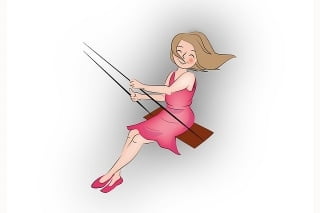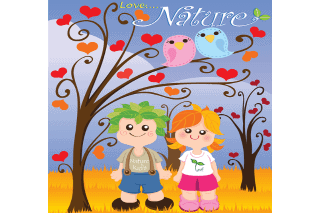

Listen to the MUSTN’TS
“Listen to the MUSTN’TS” is the short poem by poet, cartoonist, songwriter, and musician Shel Silverstein. In the poem he is telling the child that they should listen to all the voices of negativity in the world having “MUSTN’TS”, “DON’TS”, ”SHOULDN’TS”, “WONT’S” as well as all the “IMPOSSIBLES” and “NEVER HAVES”.
The poem encourages the listener, particularly a child, to ignore the negative voices and discouraging messages they may hear from others. The speaker acknowledges that there are many things that one “mustn’t,” “don’t,” “shouldn’t,” and “won’t” do, and that there may be people who tell you that certain things are impossible or out of reach. But then the speaker gives a positive message: “Anything can happen, child, / ANYTHING can be.” The poem suggests that by following your own dreams and passions, you can achieve anything you set your mind to.
All these volumes of advices will tell the child what they should or shouldn’t do, or what can or can’t be done, so at the end poet encourages and assures them towards the positivity of the life. He makes it clear that ANYTHING can happen or can be done.
“Listen to the MUSTN’TS” Poem Lyrics
Listen to the MUSTN’TS, child,
Listen to the DON’TS
Listen to the SHOULDN’TS
The IMPOSSIBLES, the WONT’S
Listen to the NEVER HAVES
Then listen close to me-
Anything can happen, child,
ANYTHING can be
“Listen to the MUSTN’TS” is written in simple language and has a catchy, repetitive rhythm that makes it easy to remember. It has become a popular poem for inspiring young people to believe in themselves and pursue their goals, and is often used in classrooms and educational settings.
The first stanza lists various negative messages that people might hear throughout their lives, including messages that discourage them from pursuing their dreams and taking risks.
In the second stanza, however, the speaker offers a counterpoint to these negative messages. He encourages the listener to believe that “anything can happen” and “anything can be.” This message is one of possibility and optimism, and it suggests that the limitations we encounter in life are often self-imposed.
It is a simple but powerful poem that encourages readers to believe in themselves and their own potential. Its message is both timeless and universal, and it has resonated with readers of all ages since its publication.
Frequently asked questions (FAQ's) based on 'Listen to the MUSTN’TS'
Answer : The poet of “Listen to the MUSTN’TS” poem was Shel Silverstein.
Answer : In the poem he is telling the child that they should listen to all the voices of negativity in the world having “MUSTN’TS”, “DON’TS”, ”SHOULDN’TS”, “WONT’S” as well as all the “IMPOSSIBLES” and “NEVER HAVES”.
Answer : All these volumes of advices will tell the child what they should or shouldn’t do.
Answer : The Poet at the end giving the message that anything can be done or anything can happen.
Some more details based on 'Listen to the MUSTN’TS'
“Listen to the MUSTN’TS” is a poem by Shel Silverstein that encourages readers to follow their dreams and not be deterred by the limitations and restrictions that others may impose on them.
The poem begins with a series of “mustn’ts,” or things that people often tell us we cannot do. These include “mustn’t talk in class,” “mustn’t skip rope,” and “mustn’t splash around in the swimming pool.” Silverstein then counters each “mustn’t” with an encouraging message, telling readers to “listen to the don’ts,” “listen to the shouldn’ts,” and “listen to the impossibles” because “anything can happen, child. Anything can be.“
The poem has been used in classrooms, graduation speeches, and motivational workshops to inspire and encourage people to follow their dreams. The poem’s message is particularly relevant in today’s world, where there are many challenges and obstacles that can prevent people from pursuing their goals. The poem encourages readers to ignore the naysayers and to believe in themselves and their abilities.
In addition to its motivational message, “Listen to the MUSTN’TS” is also notable for its use of imagery and sensory language. The poem’s vivid descriptions of skipping rope, splashing in a swimming pool, and climbing a tree create a sense of nostalgia and longing for the carefree days of childhood.
Some activities for children's based on 'Listen to the MUSTN’TS'
Activity 1: Create a List of “MUSTN’TS”
- Before starting the activity, you may want to have a class discussion about the concept of “mustn’ts” and how they can affect us. Ask children how it feels when they are told they can’t do something, and whether they think all “mustn’ts” are equally important.
- Encourage children to be as creative and specific as possible in their lists. You may want to give them a time limit or a set number of items to include to keep the activity focused.
- After the lists are complete, you can have a group discussion about the items and ask children to explain why they think each one is a “mustn’t.” You may want to encourage them to question whether each item is really a hard-and-fast rule, or whether there are exceptions or alternative ways of doing things.
Note: This activity helps children to develop critical thinking skills and self-awareness. It can also help them to identify areas where they may feel limited or restricted, and begin to think creatively about how they can challenge those limitations.
Activity 2: Draw a Mustn’t Monster
- This activity can be done with a variety of art supplies, depending on what is available to you. You may want to have children use markers, colored pencils, or crayons to create their monsters, and provide paper of different sizes or shapes to encourage creativity.
- Before starting the activity, you can have a discussion about what the monster represents and why it’s important to acknowledge the “mustn’ts” in our lives. You may want to ask children to share examples of times when they felt limited or frustrated by a “mustn’t.”
- After the drawings are complete, you can have children share their monsters with the class and discuss what they represent. You may want to ask them to explain why they chose certain features for their monsters, or what the monsters would do if they came to life.
Note: This activity encourages children to use their imaginations and express themselves creatively. It can also help them to process and understand their emotions around being told they can’t do something.
Related links
Other popular poems
Other related keywords and search's
- listen to the mustnts print
- listen to the mustnts poem meaning
- listen to the mustnts pdf download
- listen to the mustnts poem analysis
- listen to the mustn'ts analysis
- listen to the mustn'ts by Shel Silverstein
- listen to the mustn'ts full lyrics printable
- listen to the mustn'ts questions and answers
- listen to the mustn'ts written in english
- listen to the mustn'ts words and notes




















